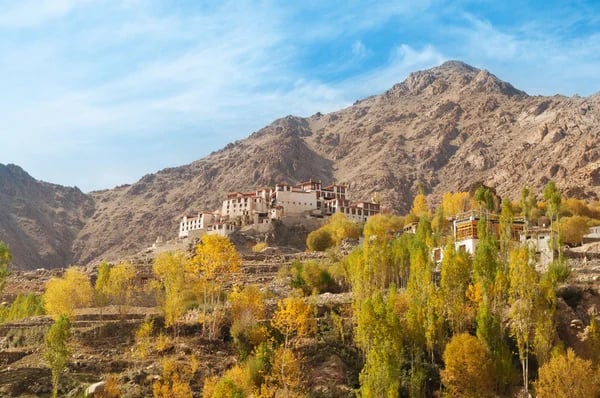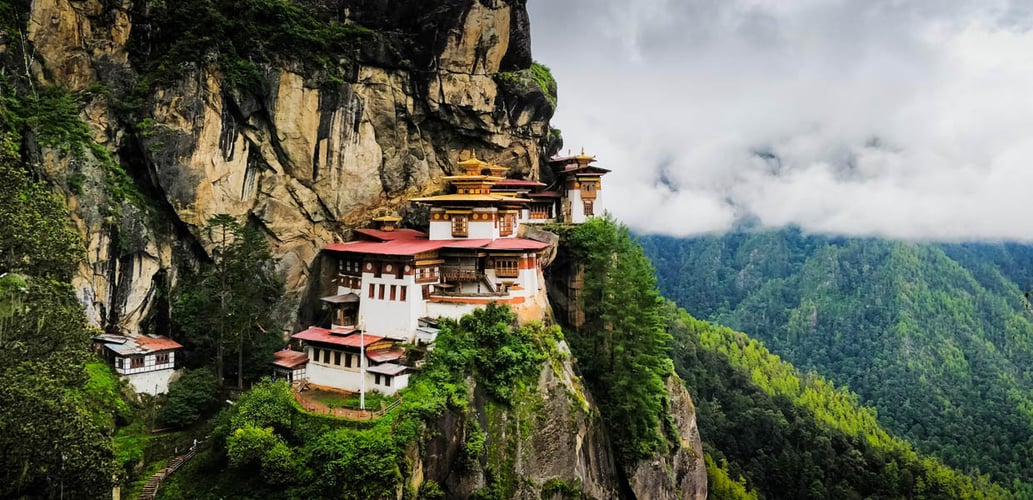The Most Beautiful and Unique Ladakh Monasteries
The air is so serene, the mountains so calm, and the monasteries in Ladakh spell their own unique charm.
Monasteries are synonymous with Ladakh and therefore, it is no surprise to see one in every settlement perched at the hilltop with a fabulous view. It is rather a perfect and harmonious blend of culture and landscape that the monasteries reek of. In the Ladakhi language, the meaning of the word gompas (monasteries) is ‘solitary places’. Rightly so, the gompas are like focal points of worship where monks (also called lamas) live and perform their duties. They are so oblivious to the outer world and so devoted to their worship which is fascinating to watch.
Most of the monasteries are built on hilltops that overlook a village or town. Monasteries look more like forts owing to their huge walls, large buildings and stand-alone architecture that they have. If there are no stupas (or chortens in the Ladakhi language) or multi-hued prayer flags, they look almost like forts. Some gompas are as old as the 11th century and still standing tall.
Here is an account of the 11 main monasteries that must be visited on the trip to Ladakh:
1. Hemis
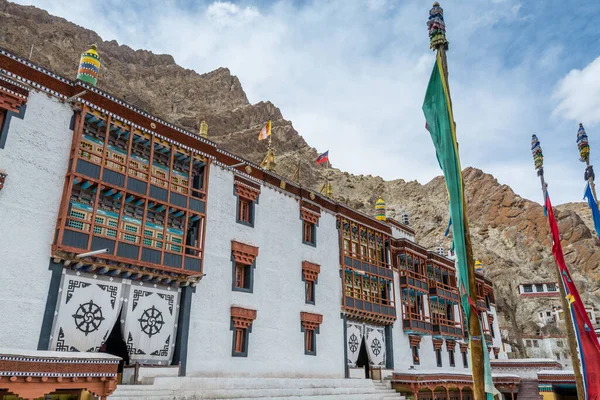
The image shows Hemis monastery in Ladakh this image is of Thiksay
Image courtesy: depositphotos.com
There are umpteen monasteries perched atop high peaks all over Ladakh. They are indeed a true reflection of Buddhist culture. Hemis monastery, the richest and largest monastery in Ladakh, is famous for the Hemis festival which is a major attraction for people from all over the world. It is held every year in the month of June or July. It is a 2-day religious festival and every 12 years, during this festival, there is an unfurling of one of the largest thangkas in Ladakh. The monastery forms a part of the Drukpa lineage of Buddhism. Lamas perform the masked dance or chham during the festival.
Book your Hemis festival with us on your Ladakh trip.
2. Thiksey
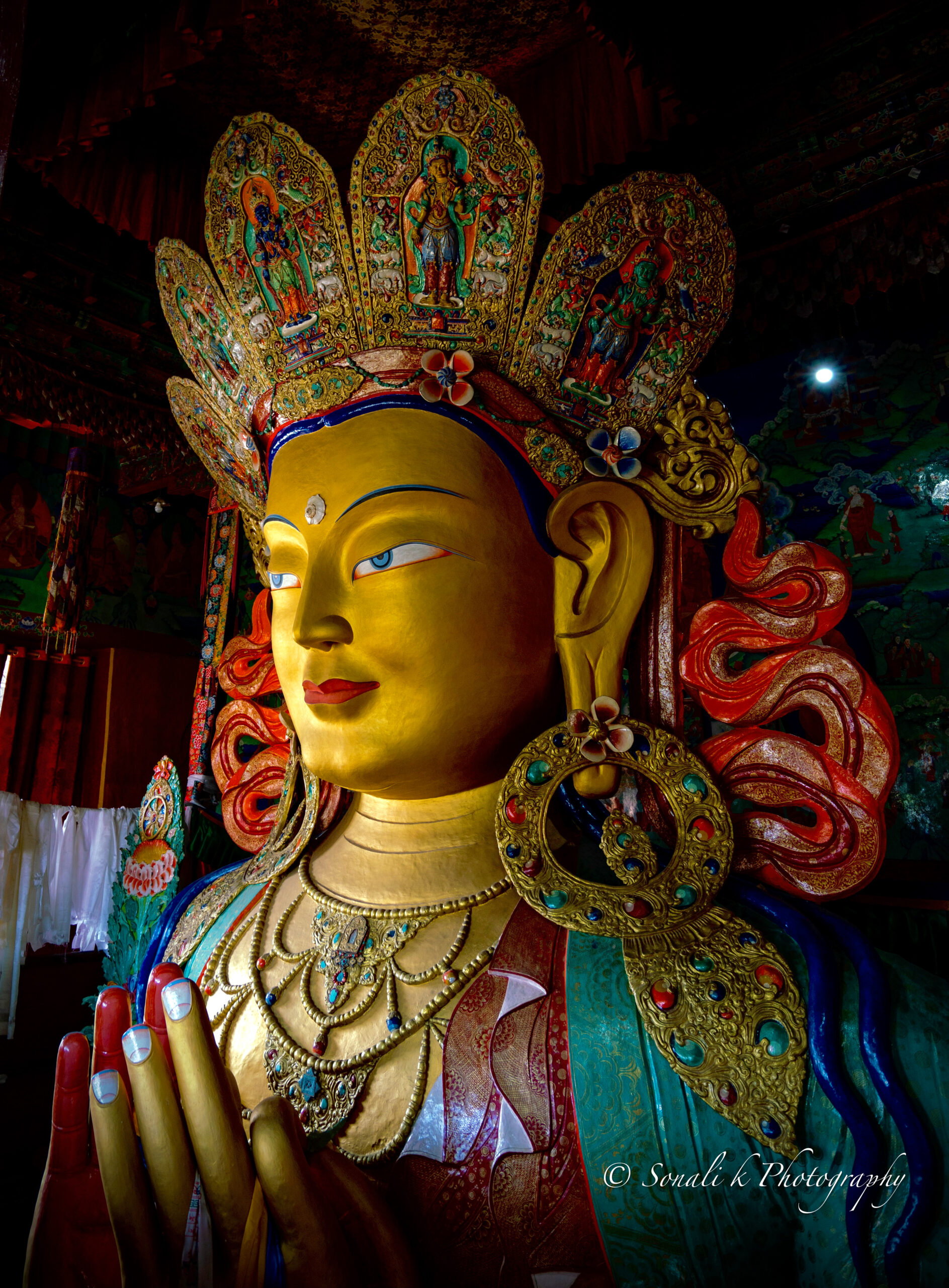
The image shows the stunning Buddha statue in the Thiksey monastery
Image courtesy: sonalikphotography
Thiksey is a beautiful monastery and its sheer look of massive grand stature differentiates it from the rest of the monasteries. It is located at an easily drivable distance of 19 km from Leh city. Another fact is that it bears a stark similarity to the Potala Palace in Tibet’s Lhasa. It is among the largest monasteries in Ladakh and dates back to the 15th century.
The highlight of the monastery is the Maitreya Buddha which stands at a height of 15 metres. It is placed in the shrine room that has two storeys. His Holiness the Dalai Lama dedicated the statue in the year 1980. The roof terrace of the monastery lends a spectacular view of the Stok Kangri peak, Shey palace, and the beautiful green fields that lie around it. There is also early morning prayer which is open to visitors. Every day monks, donning their crimson robes sit in rows and chant. The whole atmosphere is mesmerising and you can really feel the power of Buddhist mantras and chants.
Attend the mesmerisingly spiritual and blissful morning prayer at the Thiksey monastery in Ladakh.
3. Lamayuru monastery
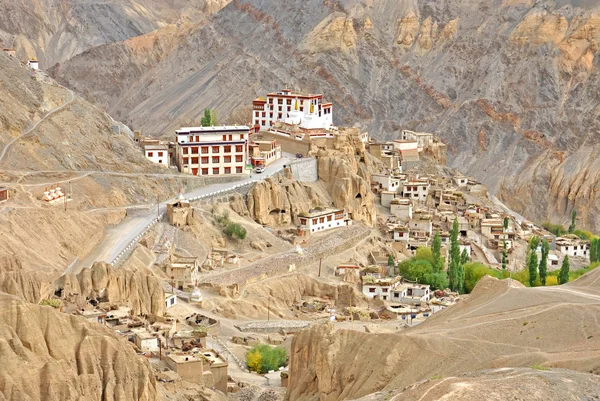
The image shows Lamayuru monastery in Ladakh
Image courtesy: depositphotos.com
Known as the moonland in Ladakh, the Lamayuru monastery is, without a doubt, the most scenic gompa. Nestled atop a mountain, Lamayuru is also the oldest monastery of Ladakh, just like the Alchi monastery. Situated on the Leh-Srinagar highway off the main road, the monastery is at a distance of about 115 km from Leh.
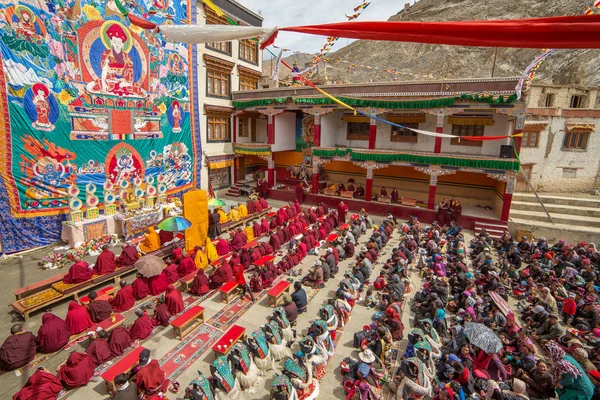
The image shows different sects of Buddhist people gathered in the Lamayuru monastery
Image courtesy: depositphotos.com
The main assembly hall of the gompa is built all around the opening of a cave. Legend also says that this land was at the bottom of a deep lake. Over many years and with the passage of time, the sands of the lake now look something like a moonland.
4. Likir
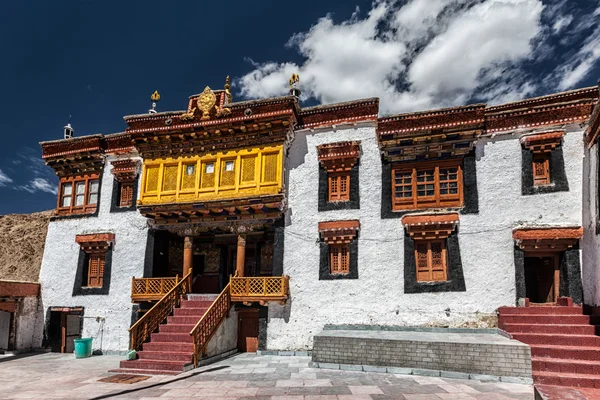
The image shows the Likir monastery in Ladakh
Image courtesy: depositphotos.com
Located at a distance of 60 km from Leh city, Likir is said to have been founded in the 11th century as well. The present structure though was rebuilt in the 18th century.
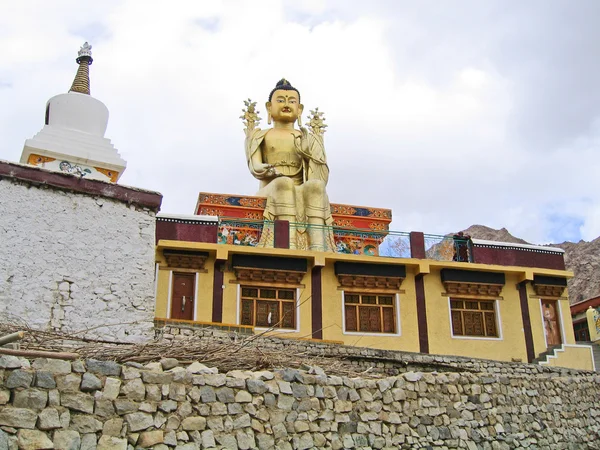
The image shows the Maitreya Buddha statue at Likir monastery
Image courtesy: depositphotos.com
The highlight of the monastery is the Maitreya Buddha statue which stands 23 metres high and is visible from a fair distance. It sits right next to the monastery’s main building and was inaugurated in the year 1997.
5. Basgo
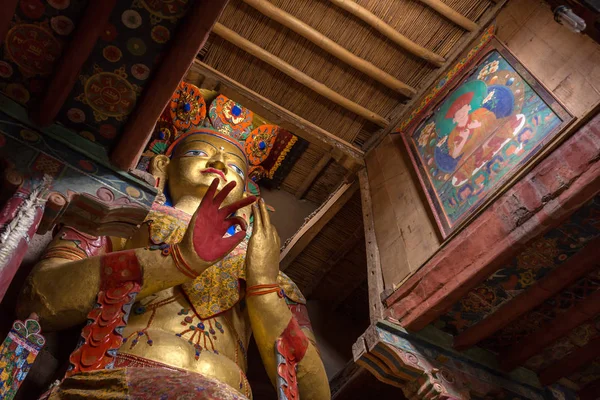
The image shows Maitreya Buddha in Basgo monastery in Ladakh
Image courtesy: depositphotos.com
Basgo, along with Shey and Leh was one of the residences of the royal family. Tsewang Namgyal built the monastery and it is the only monastery in the whole of Ladakh with 16th-century murals still surviving. There is restoration work being taken up by UNESCO in the monastery.
6. Namgyal Tsemo
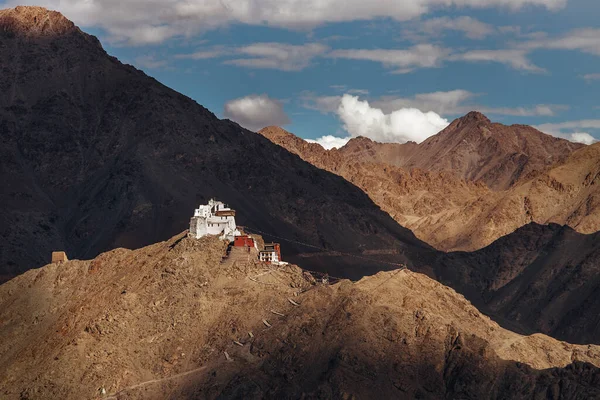
The image shows Namgyal Tsemgo Gompa in Ladakh
Image courtesy: depositphotos.com
The first royal residence of Leh is the Namgyal Tsemo. It is a towering building, small in size and overlooking Leh town. There is an 8-metre-high statue of Maitreya Buddha in the gompa. The complex is a deserted building that has gon-khang or the room of guardian deities where the Mahakala statue with six arms is placed.
7. Diskit
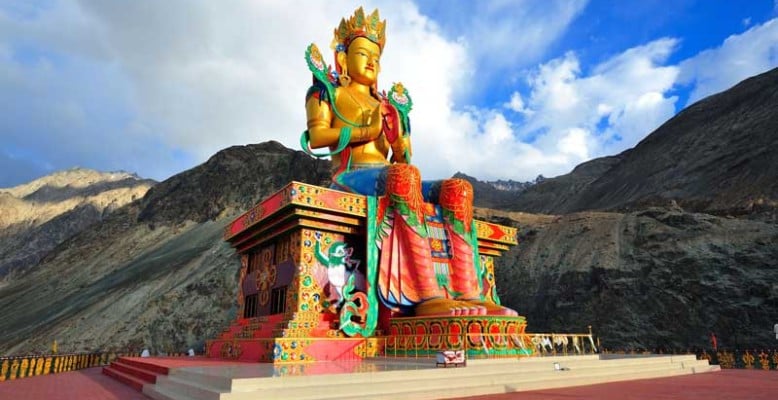
The image shows the 32-metre-high statue of Maitreya Buddha in the Diskit monastery
Image courtesy: offbeatracks.com
Nubra valley is an enchanting area of Ladakh that is scenic and splendid in every way. The majestic monastery here, Diskit is another beautiful gompa that is sure to amaze you. His Holiness the Dalai Lama inaugurated the 32-metre-high Maitreya Buddha statue which is the symbol of this old and large monastery. It was founded by Changzen Tserab way back in the 14th century.
Diskit sees the celebration of the Dosmochey festival in the last week of February every year where locals of different villages of Nubra valley come together to enjoy the cham or masked dances. The festival is celebrated in mid-February every year and marks the eradication of evil.
8. Phuktal
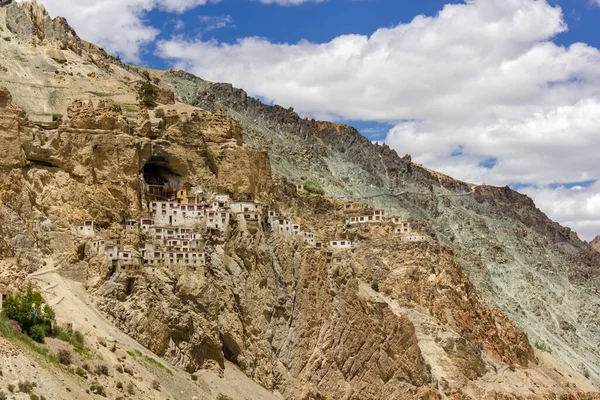
The image shows a cave monastery or Phuktal in the Zanskar region in Ladakh
Image courtesy: depositphotos.com
Phuktal monastery is a photographer’s delight but only after one has dared to bear the challenging walk on foot to reach it. It is situated atop a cliff and the main shrine rooms are towards the inside of the cave. Many wooden ladders and platforms are what help you to reach the gompa. This Gompa is considered an important religious centre in Zanskar. Some parts of this monastery got destroyed in heavy snow in the year 2010. The Zanskar is a very remote and hard-to-access valley in Ladakh.
9. Spituk
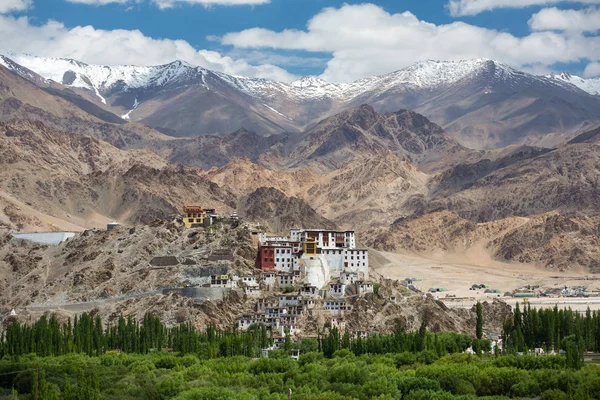
The image shows the view across the Spituk monastery in Ladakh
Image courtesy: depositphotos.com
Spituk is an 11th-century Gompa known for the huge Kali statue that is revealed every year on Gustor which is the annual festival. Spituk is situated at a short distance from Leh and is definitely a must-visit destination. The monastery now forms a part of the Tsongkhapa or Yellow Hat of Tibetan Buddhism.
‘Spitok’ means spectacular and that is what this Gompa reeks of. Its views are spectacular and so is the feeling you get when you visit this serene place. The Spituk Gustor festival occurs annually somewhere around 28th-29th January. There are unique masked dances or chham performed by lamas that turn the whole atmosphere into an electrifying one.
10. Shey
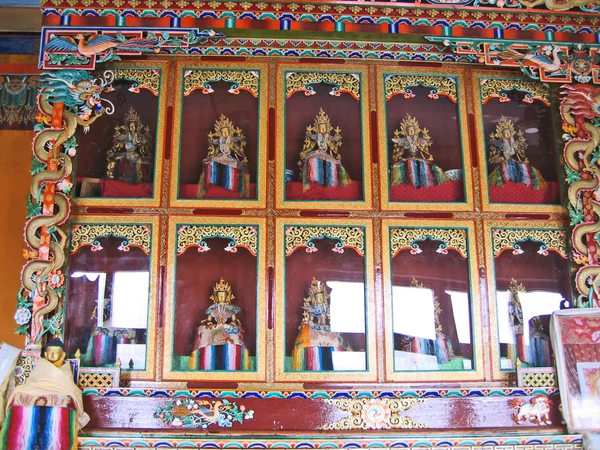
The image shows Buddha statues in Shey monastery in Ladakh
Image courtesy: depositphotos.com
Shey monastery forms part of the Shey complex that houses the monastery and the Shey Palace which was the erstwhile summer capital of the royal family of Leh. a key feature of this monastery is the 39 ft Shakyamuni Buddha that is made of gilded gold and copper. Some say that it is the second-largest statue in the whole of Ladakh.
There are two seasonal festivals that occur in the monastery every year. One is the Shey Doo Lhoo which marks the beginning of the sowing season. It is celebrated around the 26th or 27th of July every year.
The other festival is celebrated to mark the harvest called the Shey Rhupla. This is characterised by the farmers offering the first harvest of corn to the monastery. Men perform a special Rhupla dance in tiger costumes which is sure to be a delight to watch!
11. Matho
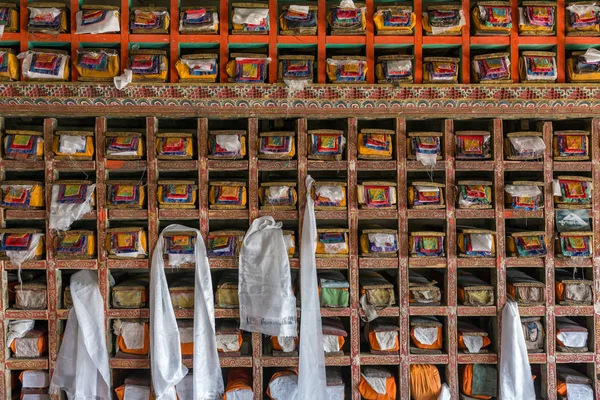
The image shows old manuscripts in the Matho monastery
Image courtesy: depositphotos.com
This monastery was built in the 16th century. This is the only monastery that belongs to the Sakyapa sect of Tibetan Buddhism in Ladakh. Matho monastery does not lie on the main Leh highway and therefore, is rather an offbeat destination to visit. this is the reason it experiences fewer tourists all throughout the year. The monastery is famous for its 600-year-old thangkas and the Matho Narang festival.
The Matho Narang is a 2-day festival celebrated in the winter season in the Matho monastery. It is very popular among the locals owing to the prophecy of two oracles. It takes place on the 15th day of the month of February/March according to the Tibetan calendar.
The main attraction of the festival is the Chham or masked dance performed by lamas to the traditional music beats of Tibetan instruments. Another attraction are the oracles who make their first public appearance after two months of fasting and complete isolation. The locals seek advice from them regarding their problems as they are said to have divine powers.
The calm that is felt in entering, feeling and really experiencing the stillness in these places of worship is unparalleled. Plan a monastic trip to Ladakh to experience bliss in the monastic festivals, and Gompa tours and feel the serenity of these Buddhist places of worship.
